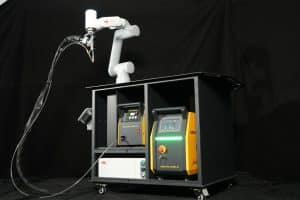Laser welding and MIG welding are two different processes that have their own advantages and disadvantages.
MIG welding, also known as Gas Metal Arc Welding (GMAW), is a process that uses a consumable wire electrode and an inert gas to shield the weld from atmospheric contamination. MIG welding is known for its speed, ease of use, and versatility. It is commonly used in automotive, construction, and fabrication industries.
Laser welding, on the other hand, uses a highly focused laser beam to join two or more pieces of metal together. Laser welding is known for its high precision and ability to weld thin and delicate materials. It is commonly used in the aerospace, medical, and electronics industries.
When it comes to robustness, both laser welding and MIG welding can produce strong and reliable welds if done correctly. However, laser welding has some advantages over MIG welding in terms of robustness.
First, laser welding produces a smaller heat-affected zone compared to MIG welding. This means that laser welding can produce welds with less distortion and fewer residual stresses, which can lead to more robust and durable welds.
Second, laser welding can produce deeper and narrower welds compared to MIG welding. This means that laser welding can join thicker materials with a higher aspect ratio, which can lead to stronger and more robust welds.
Finally, laser welding can be more precise and repeatable than MIG welding. This means that laser welding can produce welds with consistent quality and accuracy, which can lead to more robust and reliable welds.
In summary, while both laser welding and MIG welding can produce strong and reliable welds, laser welding has some advantages in terms of robustness due to its ability to produce smaller heat-affected zones, deeper and narrower welds, and more precise and repeatable welds.





